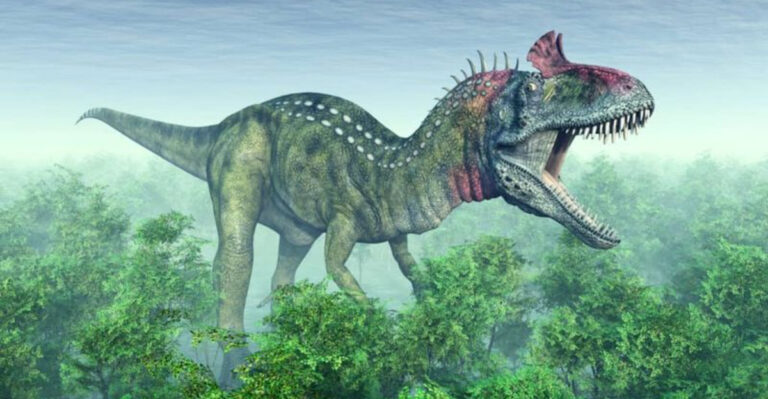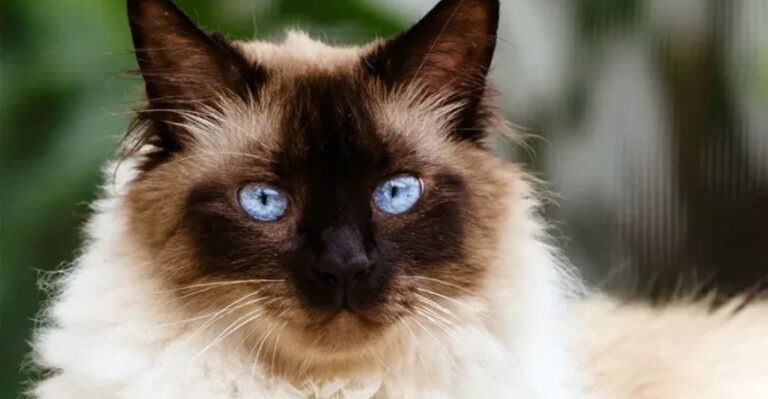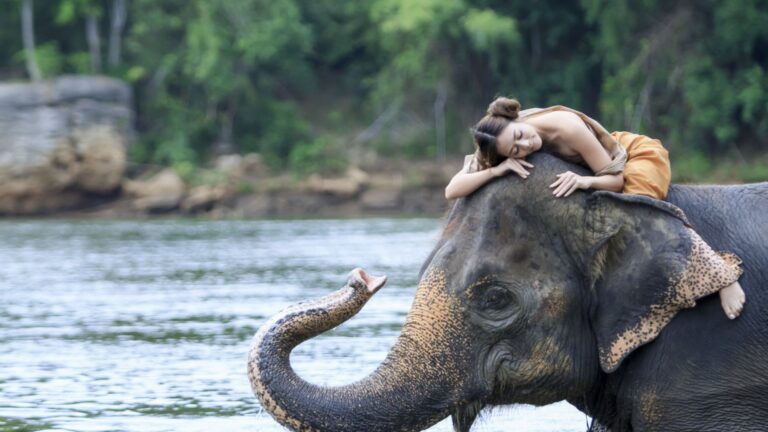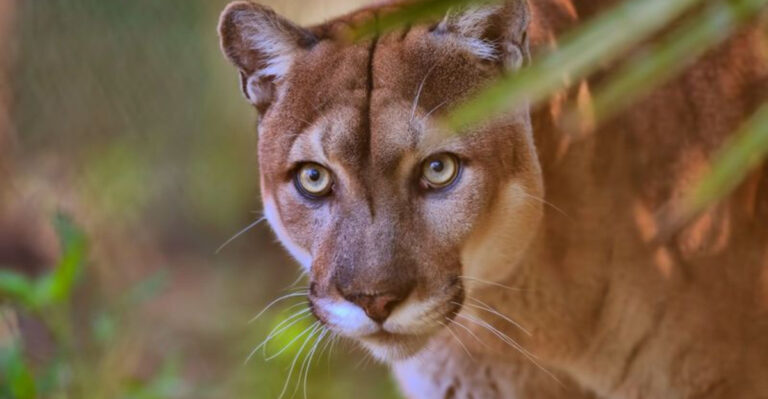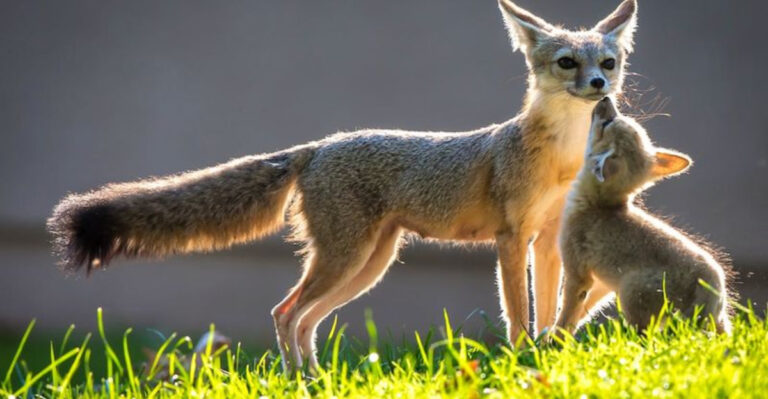13 Fascinating Facts About The American Mustang You Didn’t Know
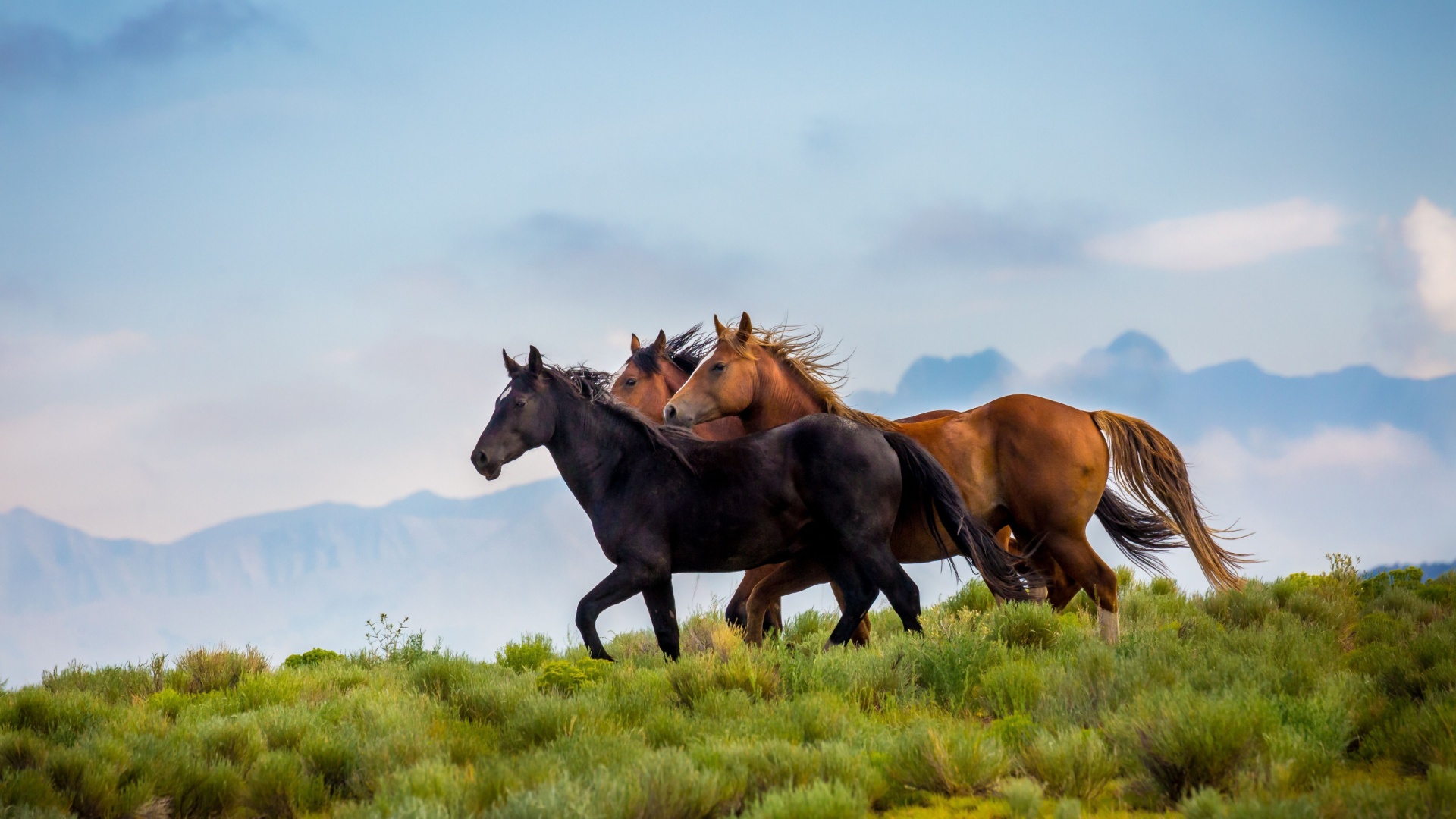
Galloping across the arid plains and lush meadows of North America is a living symbol of untamed freedom: the American Mustang.
Often seen as the quintessential embodiment of wild spirit and adventure, these iconic horses have stories that are as fascinating as their majestic gallop. Roaring into the pages of history, the mustangs have more than just a wild reputation.
They are creatures of facts, myths, and astonishing tales. Saddle up as we trot through some of the most captivating facts about the American Mustang that might just make you neigh with delight.
1. The Origins Of Mustang
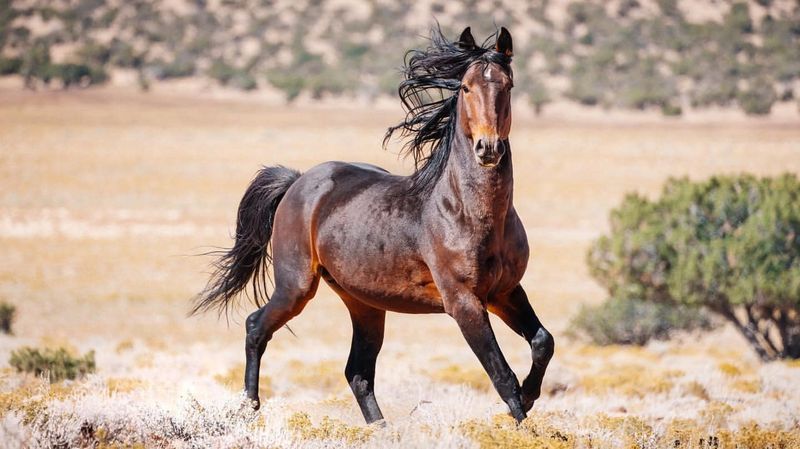
The word ‘Mustang’ originates from the Spanish word ‘mesteño’ or ‘mestengo,’ which means ‘wild’ or ‘stray.’ This etymology hints at their early history when they first roamed the Americas. It all began in the 16th century when Spanish explorers brought horses to the New World. By the mid-1500s, some of these horses escaped or were released, leading to the formation of free-roaming herds.
These early mustangs were primarily descendants of Andalusians, Barbs, and Arabians, known for their endurance and strength. Over time, these horses adapted to the diverse landscapes of North America, from deserts to mountains. Their genetic makeup expanded as they interbred with other escaped or released breeds over the centuries.
This mingling of DNA has given mustangs their unique traits, making them a truly American icon. Despite their mixed lineage, mustangs maintain a distinct appearance, marked by their strong, muscular build and resilient nature. Their ancestral roots play a crucial part in their story, painting a picture of survival and adaptability.
2. Mustang Colors And Patterns
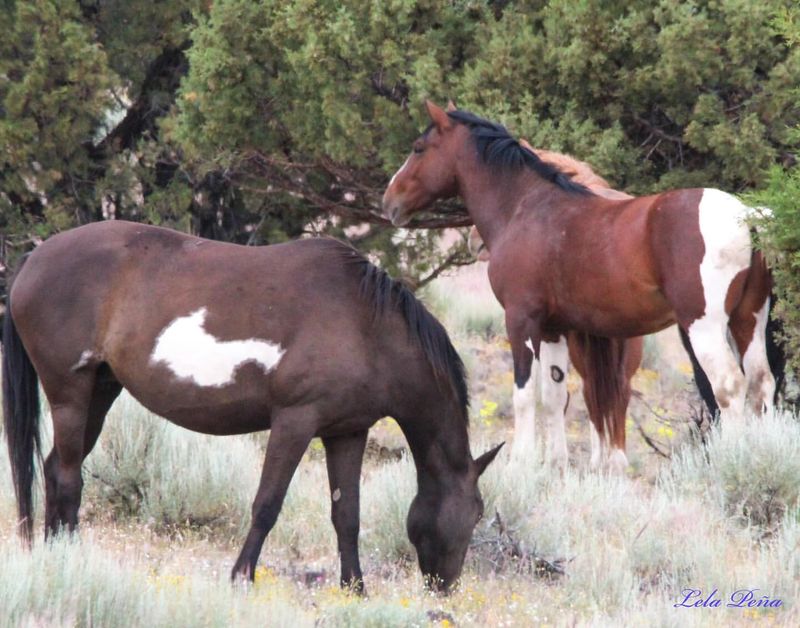
A kaleidoscope on hooves, mustangs display a remarkable variety of colors and patterns. From the sunlit glow of a palomino to the speckled beauty of a pinto, these horses are nature’s canvas. The diverse coat colors are a result of their mixed ancestry, which includes a variety of horse breeds.
Mustangs can be found in virtually every equine shade, but common colors include bay, black, and chestnut. Unique patterns like roan and appaloosa add to their dazzling array, making each herd a living tapestry. This vibrant diversity is not merely for aesthetics. In the wild, certain colorations can offer camouflage, helping the mustang blend into their environment to avoid predators. Their coats also change with the seasons, thickening in winter to provide warmth and shedding in summer for coolness.
The coat of a mustang is more than just skin deep; it’s a testament to their survival and evolutionary prowess in the wild. Through every hue and pattern, the mustang tells a story of adaptation and resilience.
3. Mustangs And Their Social Structure
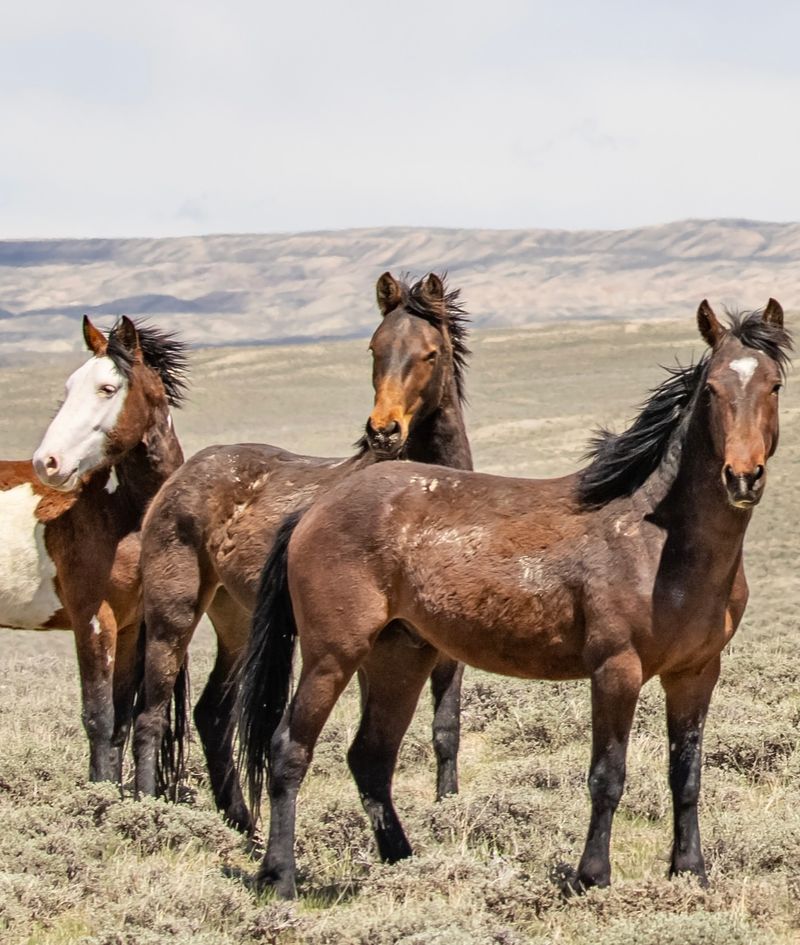
In the mustang world, social structure is akin to a tight-knit community with its own hierarchy and rules. At the helm is a dominant stallion, the leader who guides and protects the herd. This stallion is not just a figurehead; he plays a crucial role in decision-making, especially regarding movement and safety. His leadership is complemented by the lead mare, often the most experienced female, who determines the direction the herd takes when traveling to water or grazing areas.
Mustangs live in bands usually consisting of one stallion, several mares, and their offspring. These bands are part of larger herds, fostering a sense of community. Social bonds are strong, with mares often forming lifelong friendships. Young stallions eventually leave to form bachelor groups or seek their own mares.
The mustang’s social dynamics ensure that the herd thrives. Their interactions are a delicate balance of competition and cooperation, a testament to the survival instinct that has kept them roaming freely for centuries.
4. The Mustang’s Incredible Endurance
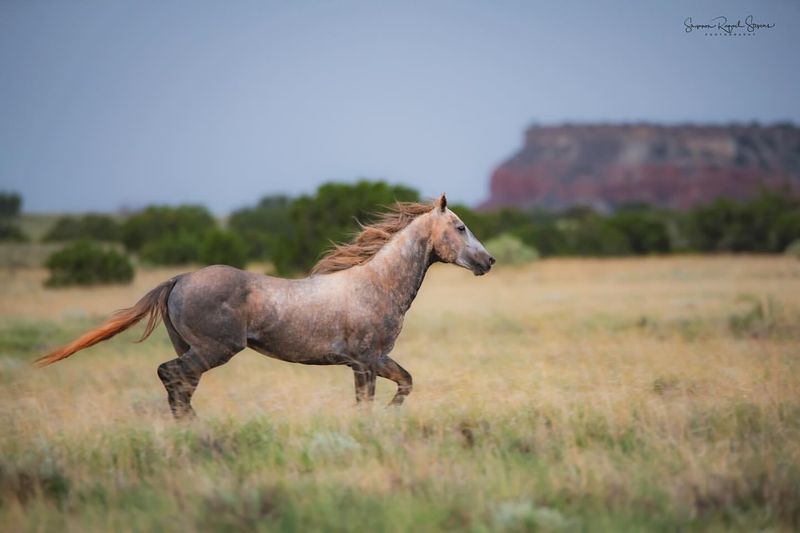
These horses can travel vast distances across challenging terrains with remarkable speed and agility. Thanks to their lineage, which includes breeds known for endurance like the Arabian, mustangs have developed exceptional stamina. Whether traversing arid deserts, rocky mountains, or lush grasslands, they adapt to various environments with ease.
Their endurance is not limited to physical prowess; it’s also about survival. Mustangs can go without water for longer periods compared to domestic breeds, a vital trait in the wild. Their hooves are another marvel, naturally hard and adept at navigating harsh landscapes without the need for shoes.
This resilience has been honed over generations, allowing mustangs to thrive where others might falter. Their strength and adaptability make them not just survivors but masters of their domain. It’s their incredible endurance that has helped them become the living symbols of freedom and unyielding spirit they are today.
5. The Unique Mustang Hooves
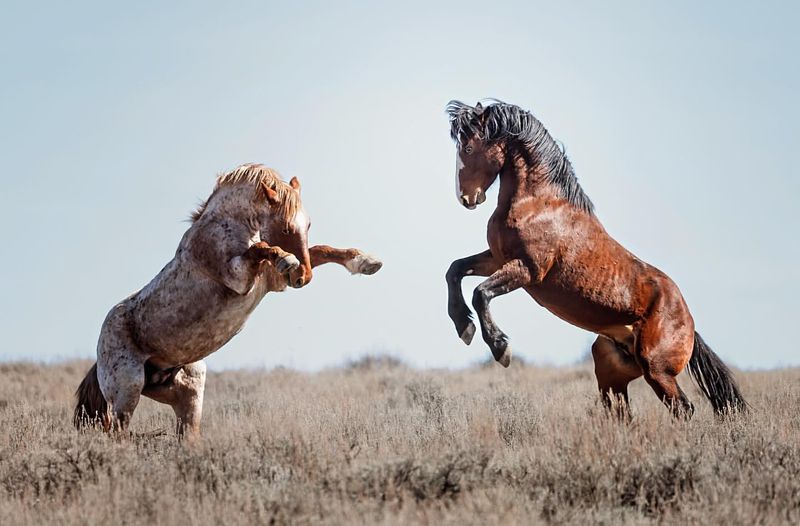
Unlike many domestic horses, mustangs do not require shoes. Their hooves are exceptionally hardy, capable of withstanding the tough terrains they roam. This toughness is a result of natural selection, as only those with the strongest hooves survived in the wild. The mustang’s hoof structure is compact and well-formed, providing excellent traction and support.
These hooves are self-trimming; constant movement over varied surfaces naturally maintains their shape and health. In the wild, a mustang’s hooves are essential for survival. They enable these horses to travel long distances in search of food and water, escaping predators with agility and speed.
The robustness of mustang hooves also protects against injuries and infections. Their ability to remain healthy without human intervention is a testament to the evolutionary adaptations that have made mustangs resilient survivors.
Truly, mustang hooves are an incredible facet of their biology, underscoring nature’s ingenuity in crafting creatures perfectly suited to their environments.
6. Mustang Populations And Management
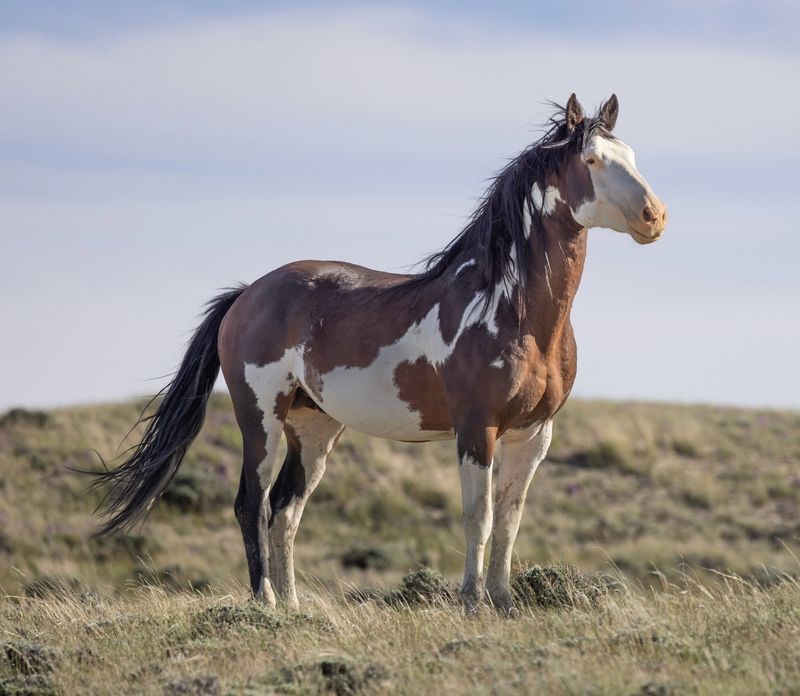
Mustang populations in the United States are a subject of ongoing debate and management. The Bureau of Land Management (BLM) oversees the protection and regulation of these horses, ensuring that populations are sustainable and healthy. There are currently tens of thousands of wild mustangs roaming public lands, primarily in the western states.
Managing their numbers is crucial to maintain ecological balance. Overpopulation can lead to overgrazing, affecting other wildlife and plant species. To control numbers, the BLM conducts roundups and implements adoption programs. These efforts aim to find homes for mustangs while keeping wild herds at a manageable size.
Public opinion on mustang management varies, with some advocating for complete protection, while others support more regulated approaches. The challenge lies in balancing the mustangs’ freedom with environmental sustainability.
Despite the complexities, mustangs continue to thrive in the wild, thanks to dedicated conservation efforts. Their story is one of survival, adaptation, and the ongoing quest to harmonize human interests with natural ecosystems.
7. The Mustang’s Diet
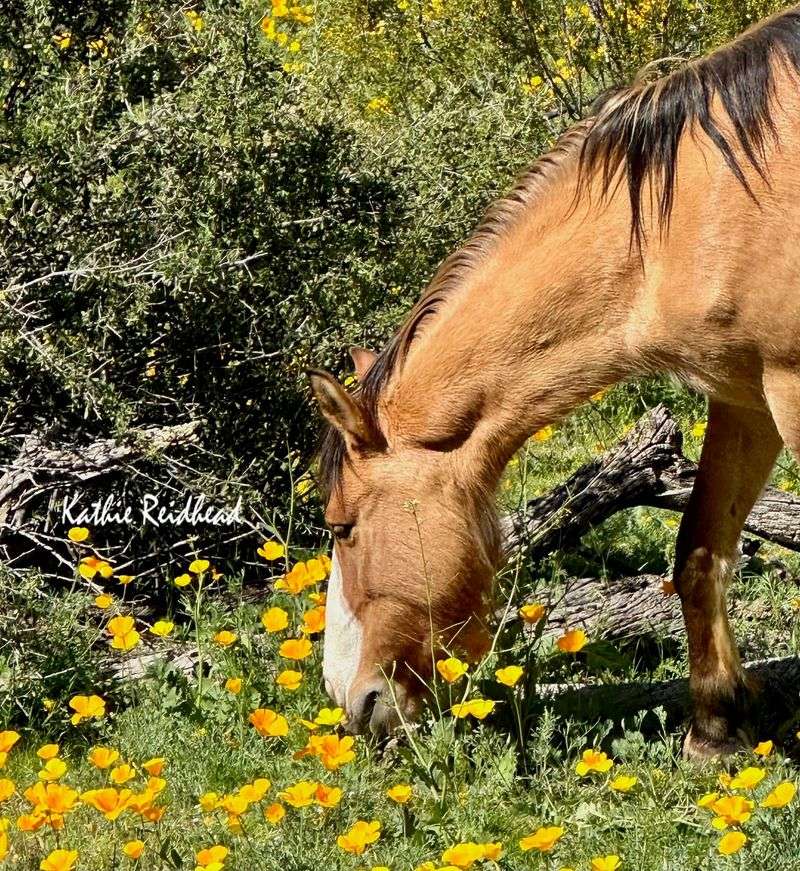
Mustangs are herbivores with a diet that is as versatile as their habitat. Primarily, they graze on grasses, but their menu extends to shrubs, herbs, and even trees depending on availability. This diet reflects their need to adapt to the often harsh environments they inhabit. Their digestive systems are well-suited to breaking down tough plant material, and they have a unique ability to extract nutrients from a wide variety of forage.
Mustangs can survive on sparse vegetation, a trait that has enabled them to thrive in areas where food resources are limited. In the wild, they graze for several hours a day, slowly moving across the landscape to find fresh patches of vegetation. This constant movement not only aids in digestion but also prevents overgrazing in a particular area.
Their varied diet is a testament to their resilience and ability to adapt, allowing them to find sustenance in even the most challenging conditions. The mustang’s eating habits are a crucial part of their survival story, showcasing their adaptability and tenacity.
8. Mustangs In American Culture
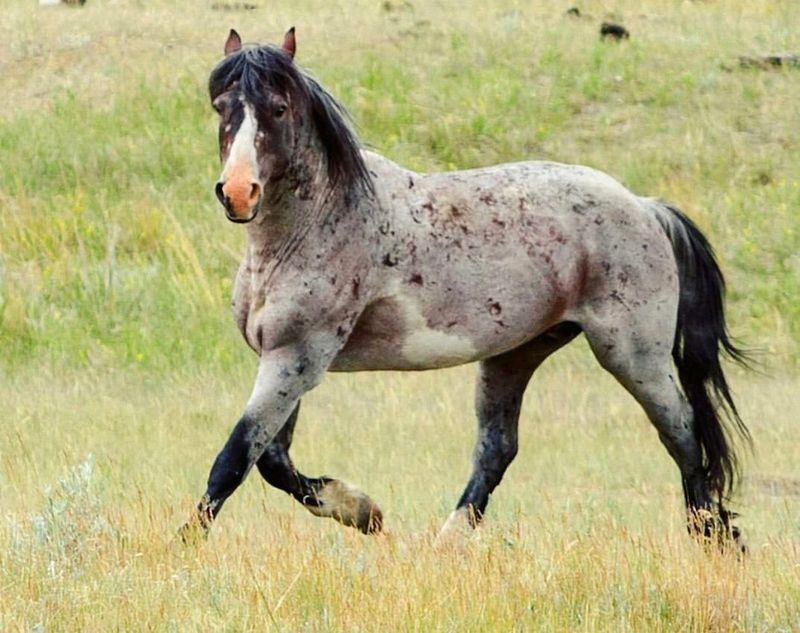
The American Mustang holds a special place in the cultural tapestry of the United States. Beyond the rugged landscapes, these horses symbolize freedom, adventure, and the pioneering spirit of the American West. They have galloped through the pages of history, inspiring countless stories, myths, and legends.
Mustangs have been celebrated in literature, movies, and art, often depicted as the embodiment of wild beauty and unbridled power. Their image is synonymous with the untamed landscapes of the West, a reminder of the country’s frontier past. The mustang has also found a place in the automotive world, with the Ford Mustang car drawing inspiration from these majestic animals. This cultural connection extends to music, with songs and ballads echoing the wild spirit of the mustang.
As symbols of uninhibited freedom, they continue to capture the imagination of those who yearn for adventure. The mustang’s cultural significance is a testament to its enduring legacy and the impact it has had on the American psyche.
9. The Mustang’s Role In Ecosystems
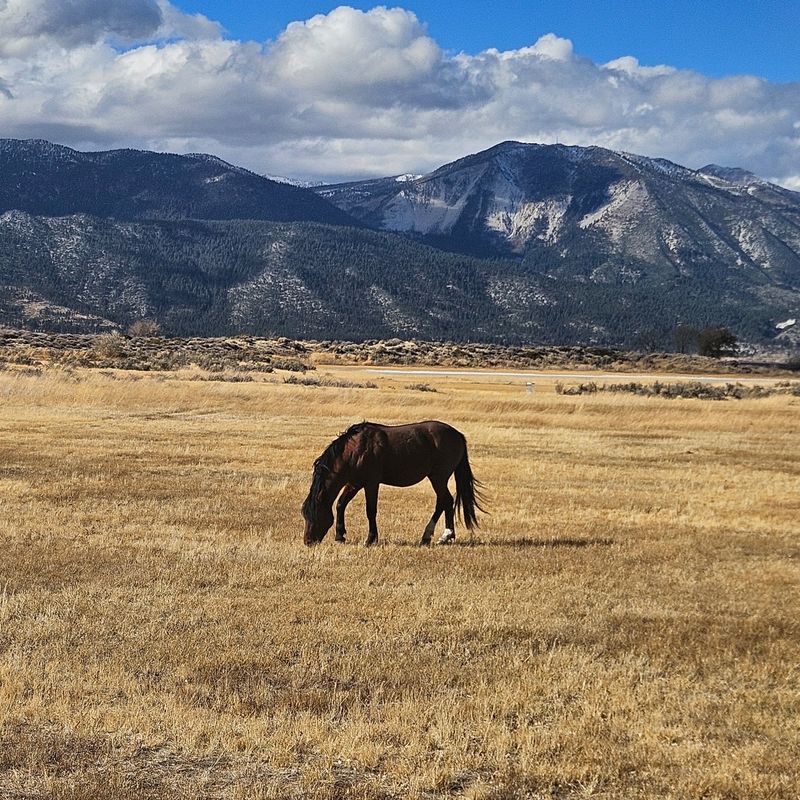
As grazers, they help maintain the balance of plant communities, promoting biodiversity. Their grazing patterns can prevent the overgrowth of certain plant species, allowing a variety of flora to thrive. This, in turn, supports other wildlife, creating a balanced and dynamic ecosystem.
Mustangs also contribute to seed dispersal, as undigested seeds pass through their digestive system and are deposited across the land. This natural process aids in the propagation of various plant species, supporting ecological diversity.
However, their presence in ecosystems is a topic of debate, particularly concerning their impact on native species and land management. While some argue that mustangs disrupt local habitats, others emphasize their role in maintaining ecological balance.
Regardless, mustangs are an integral part of the landscapes they roam, influencing the environmental dynamics in complex ways. Their interactions with the environment highlight the interconnectedness of all living things and the delicate balance of nature.
10. Mustangs In Modern Conservation
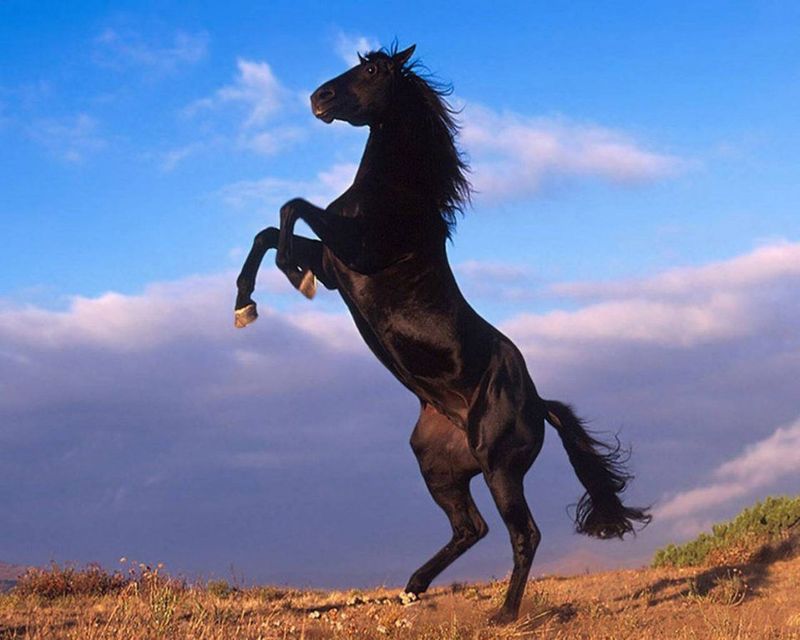
In the modern era, conservation efforts have become vital to ensure the survival and well-being of the American Mustang. Organizations and government agencies are working tirelessly to protect these wild horses and their habitats. Conservation programs focus on managing herd populations, protecting natural habitats, and promoting public awareness about the importance of mustangs.
Programs like the Bureau of Land Management’s adoption initiative aim to find homes for excess horses, reducing pressure on public lands. These initiatives are crucial in maintaining ecological balance and ensuring mustang populations remain sustainable. Public support and education are fundamental to the success of conservation efforts.
Advocacy groups strive to raise awareness about the challenges mustangs face, from habitat loss to legal protection issues. By fostering a connection between people and these iconic animals, conservationists hope to inspire future generations to value and protect mustangs.
The ongoing commitment to preserving mustangs reflects a broader recognition of their significance to American heritage and the natural world.
11. The Mustang’s Influence On Equine Breeds
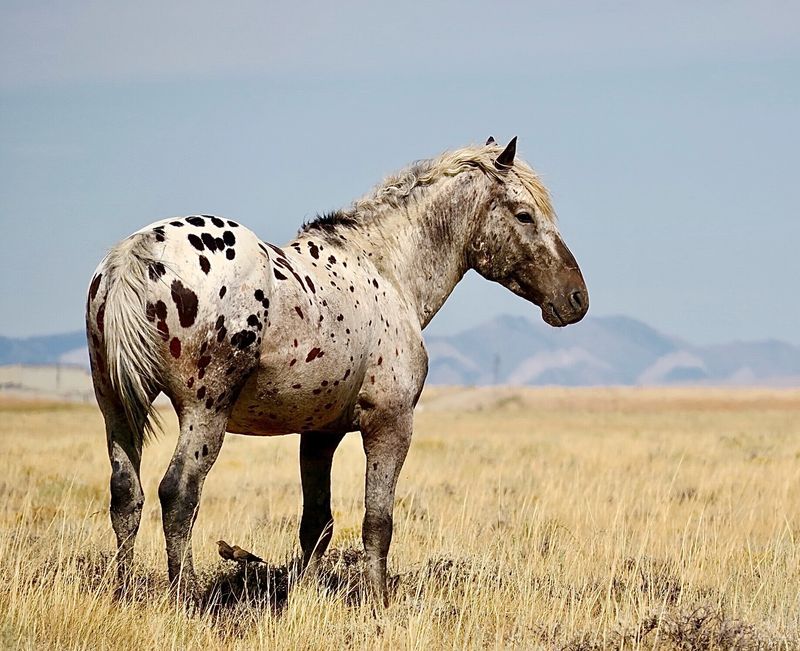
The genetic legacy of the mustang has influenced numerous domestic horse breeds across the globe. Their ancestry, rooted in the hardy horses brought by Spanish explorers, has imparted strength, endurance, and adaptability to various equine lineages. Breeds such as the American Quarter Horse and the Appaloosa have traces of mustang blood, contributing to their robustness and versatility.
The mustang’s influence is a testament to their resilience and genetic diversity. Their traits have been sought after in breeding programs, aiming to enhance the qualities of domestic horses. This blending of wild and domestic genetics has resulted in horses that excel in various disciplines, from racing to ranch work. Mustangs continue to be valued for their hardiness and natural instincts, qualities that are often lost in more refined breeds.
Their contribution to equine diversity highlights the significance of wild populations in enriching domestic breeds. As living links to their Spanish ancestors, mustangs play a pivotal role in the story of horse evolution and adaptation.
12. Mustang Myths And Legends
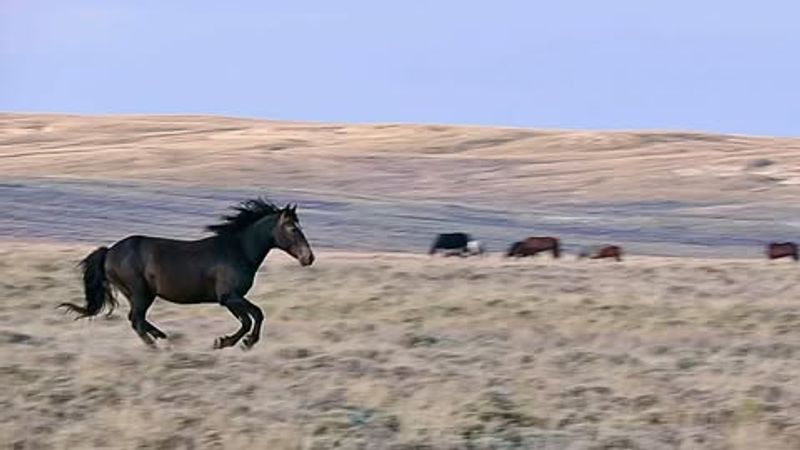
Throughout history, these wild horses have been the subject of countless tales, often portrayed as mythical beings with magical powers. In Native American folklore, mustangs were seen as gifts from the Great Spirit, embodying freedom and strength. Some stories tell of mustangs appearing in dreams, guiding individuals on spiritual journeys.
Their untamed nature and ability to survive against the odds have made them symbols of resilience and independence in various cultures. These legendary horses have also captured the imagination in literature and film, often depicted as noble creatures leading humans on epic adventures. The allure of the mustang lies in its mystery and majesty, qualities that inspire awe and reverence.
As legends continue to evolve, mustangs remain a beloved symbol of the wild, representing the untamed spirit that resides in all of us. Their stories remind us of the magic and wonder that the natural world holds.
13. The Future Of The Mustang
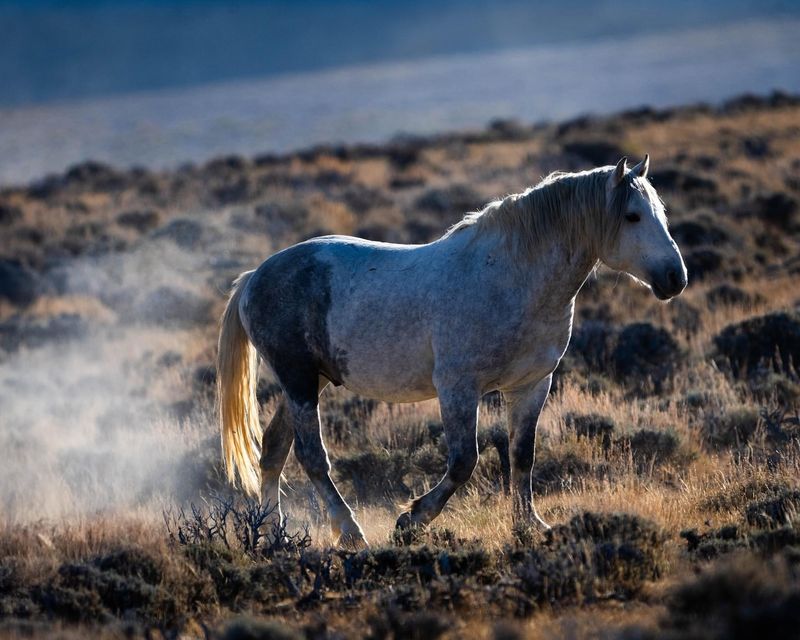
The future of the American Mustang is a topic that stirs both hope and concern. As these iconic animals continue to roam the vast landscapes of the West, their fate hangs in a delicate balance. Conservation efforts are ongoing, with many dedicated to ensuring that mustangs remain a part of the American wilderness.
The key to their future lies in sustainable management practices and public awareness. By fostering a deeper understanding of their ecological role and cultural significance, we can ensure that future generations will continue to enjoy the sight of wild mustangs galloping across open plains. The challenges they face, from habitat loss to legal battles over land use, require innovative solutions and collaboration between government agencies, conservationists, and the public.
Despite the obstacles, the spirit of the mustang endures, a symbol of resilience and freedom. Their continued presence is a testament to the enduring bond between nature and humanity, a reminder of the wild spirit that resides in the heart of America.

